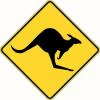
Originally Posted by
Philipp Jaindl

Sharpening a scraper so far has been more of a gamble then anything else for me, sometimes i get fantastic results others not so much. I never thought about lubricating the burnisher i'm gonna give that a try, also Hocks Video does help, seems like i tilted over the burnisher a bit too far and used too much force sometimes.
One question i do have is once it gets dull(er) are you going straight back to filing or can you "re-burnish", for lack of a better term, an existing hook?





 Reply With Quote
Reply With Quote



Scraper_html_m7dbe30df.jpg)
Scraper_html_740a8fcc.jpg)


